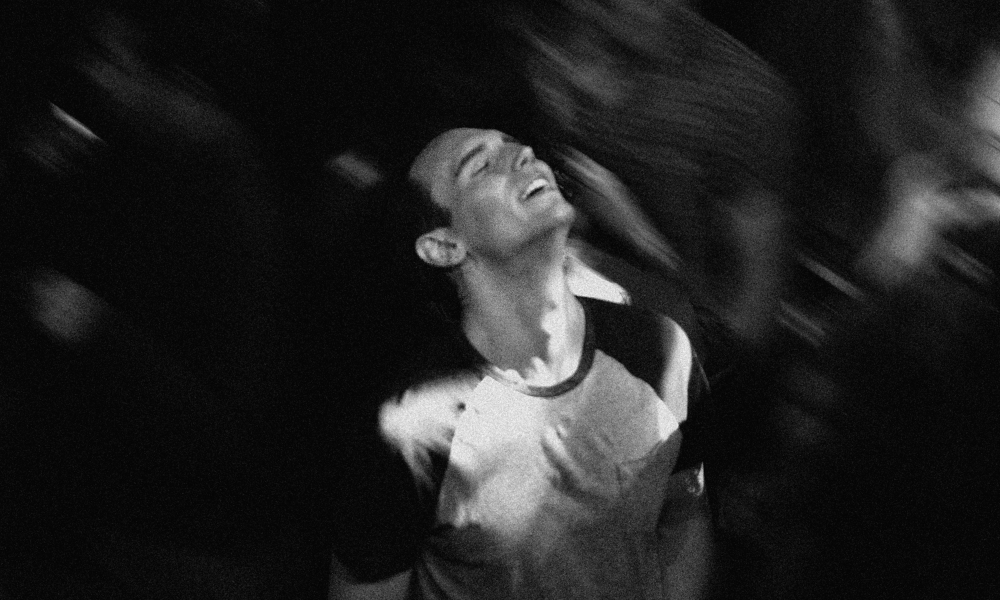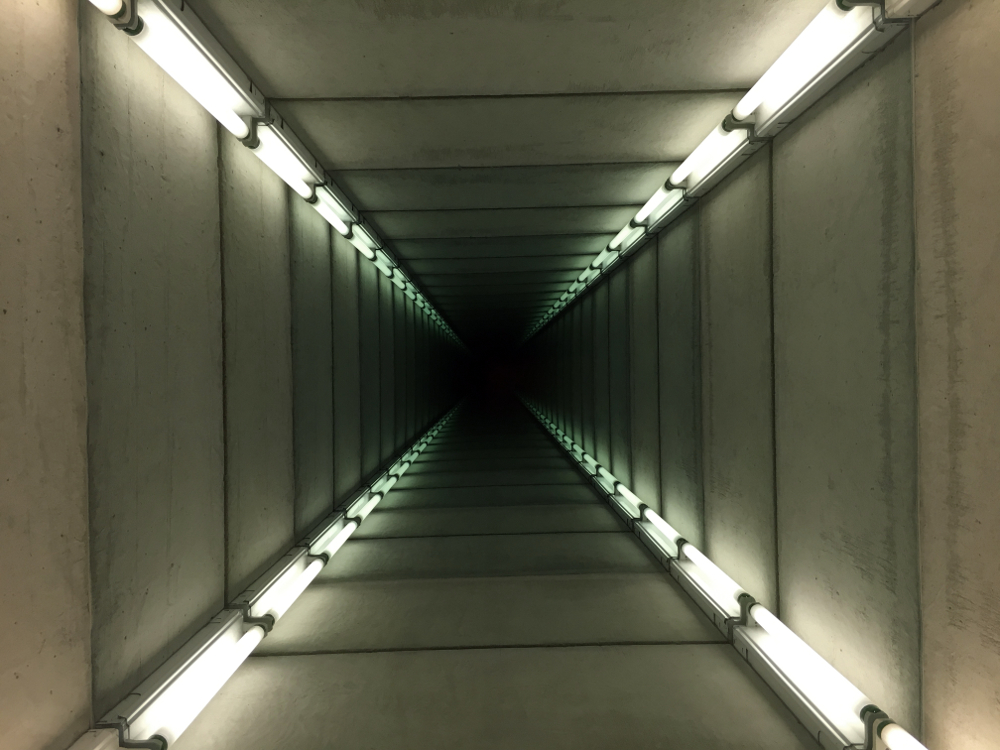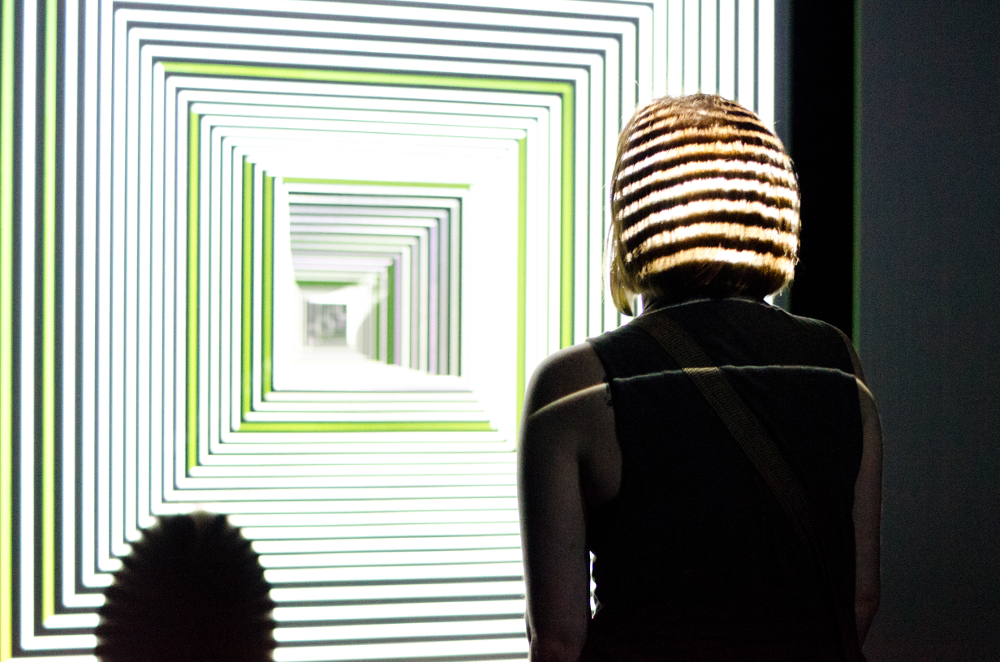If you live in Vancouver, there are more festivals than you can shake a stick at. Actually, I think there is a stick shaking festival on its way.
There are so many events on offer that one could close one’s eyes, spin in circles, fall over, and still manage to land something good.
Just this week in Vancouver, The 30th Annual Vancouver Queer Film Festival, Vines Arts Festival, the Vancouver Mural Festival, the Vancouver Bach Festival are all opening or ongoing. In other parts of the Lower Mainland, there are the Harmony Arts Festival in West Vancouver, The Burnaby Blues + Roots Festival and the New West Culture Crawl. In short, every possible permeation of arts, community hoedown and random stick-involved activity is currently on offer. Now all you have to decide is what you feel like doing.
If the answer is sitting in the dark and eating popcorn, there are also lots of good films around at the moment. You can park your bottom in the blessed cool of a movie house for a few hours with a clear conscience.
The dark fleet of Film Noir at the Cinematheque is wreaking glorious mayhem. There’s also some great documentary programming at the Vancity Theatre including the biopic of the late, great Alexander McQueen, naturally called McQueen
Even if you’re a fashion neophyte, this eponymous tale of an English lad’s rise to the giddy glorious heights of fashion is heady stuff, wine-dark, storm-tossed, exquisite, and at the heart of things very sad. The McQueen exhibit Savage Beauty broke all records for the Metropolitan Museum of Art in New York, and it’s fascinating stuff to see him when he was just a schlubby kid, making clothes with his dole money and celebrating with a cadre of skinny, hungry, fashion-obsessed punks. These early scenes are so fun and charming that the later arc of the film, as it bends irrevocably towards tragedy, is rendered that much more painful.
As far as fashion documentaries go, this is an extremely well-constructed film that makes smart use of the motifs that informed McQueen’s work — skulls, lace, animal hides, bones — it is crepuscular, frothy, lovely and ragged, like lace dragged through the dust. Almost like one of the man’s own designs.
If you can bear a bit more suffering, I would highly suggest a viewing of director Bo Burnham’s coming-of-age film Eighth Grade. If you’ve ever had a hankering to revisit the pimpled, greasy humiliation of your youth, Burnham’s film is just the ticket, albeit a rumbled, sweaty, slightly stained ticket that will catapult you backwards in time to the worst moments of your life. I had to put my hands over my eyes a couple of times to block out the agony. It is infinitely more harrowing than Tom Cruise dangling from a helicopter in Mission Impossible: Highly Improbable.
In short, the film tells the story of 13-year-old Kayla making her way through the jungle that is middle school. Blow jobs, boyfriends, Snapchat and the mortification of clueless parents are only the beginning. My favourite review of the film came not from a media publication, but from a wag on Twitter who recounts seeing the movie in a theatre where someone’s mother was insisting that the teenagers cover their eyes during a certain risqué section. To which said teenagers hollered back, “We already know what blowjobs are.” The kids are all right, but lordy it’s a complicated world these days.
Eighth Grade has garnered its fair share of critical and audience acclaim, and it’s joined by a number of other equally strong films this summer, including BlacKkKlansman, Sorry to Bother You, Leave No Trace and the occasional bad-to the-bone lark such as The Meg because really what would summer be without a giant shark movie?
If it ain’t baroque
The Bach Festival wraps up on Friday with a final epic concert at The Chan Centre.
Under the direction of Alexander Weimann, the Pacific Baroque Orchestra and soloists Gli Angeli Geneve, Aleksandra Lewandowska, Alex Potter, Thomas Hobbs and Stephan MacLeod bring one of Bach’s most stunning works to full-throated life. Composed in 1727 to mark the passing of Christiane Eberhardine, the wife of the king of Poland, it is a gorgeous ode to the death of a woman who did not have a very pleasant time being alive.
Covered with Vines
If you need something a bit more outdoors, the Vines Arts Festival kicked off this week in Vancouver. What is this festival all about? That’s an excellent question. Termed a “multidisciplinary eco-arts festival” the programming of Vines is purposely broad, encompassing all manner of different folk from artists to farmers, craftspeople and performers. It is nothing if not eclectic, maybe even apoplectic, with over 70 artists in different venues and locations across the city including Trout Lake Park, Kitsilano Beach, CRAB Park, Granville Island, the Roundhouse Community Centre and Strathcona Park.
A particularly engaging section of the festival takes place in CRAB Park with performances and installations aplenty.
Things wrap up in glorious abundance at Trout Lake on Aug. 18, with stages throughout the park offering all kinds of workshops. It all sounds like jolly good stuff, so haul your cookies to the park and partake. It’s all free!

Out on the Screen and the Plaza
The Vancouver Queer Film Festival started Aug. 9 with a screening and opening night party on the Queen Elizabeth Plaza. The parties at the Queer Film Festival are suitably legendary, but there are also some interesting films to take a look at. The Festival’s opening night film, Yen Tan’s 1985, started life as a short and grew into a feature. It’s a powerful reminder that not so long ago, the world for gay, lesbian and transgender people was very different.
Another film that also revisits the recent past is Sarah Fodey’s The Fruit Machine. While Fodey’s documentary isn’t the most visually riveting film on offer, being mostly composed of talking head interviews with various folk remembering the persecution of gay, lesbian and transgender people in the RCMP and the Canadian military, it is an indicator that things have changed a lot in a relatively short period of time.
The next generation is in the midst of staging its own full scale sea change, and nothing makes this point more sweetly than Christina Willing’s short film Beauty. Beauty explores the worlds of five gender fluid kids — Bex, Lili, Fox, Tru and Milo — as they navigate the complexities of identity, relationships and growing up. Each of the kids featured in Willing’s film are so thoughtful, well-spoken and clear that any lingering confusion you may have about gender is instantly calmed and clarified. Composed of interviews with the kids and their families, at home and at play, it is gentle and filled with a pellucid sweetness that feels like a balm to heart and mind.
Turning and turning in a widening Gyre
If one more person says to me, “New West is the Brooklyn of Vancouver,” I may spontaneously explode. A large strawberry blotch will be the only reminder left of this once proud Tyeester.
There are some remarkably cool things afoot in New Westminster. The food alone is enough to warrant a gentle SkyTrain ride. But the best reason to visit the Royal City is the New Media Gallery. I am perpetually astounded by the exhibitions on offer, and the newest show Gyre is no exception to this mind-blowing rule. This aspect is particularly apropos as Gyre makes active use of the human’s brain propensity to remake what are flashing lights and sonorous groans into an experience that plumbs the deepest and strangest realities that coil inside our minds. It’s a fecund place, as thrilling as it is discomfiting. Walking through the gallery, I thought about Michael Pollan’s new book How to Change Your Mind that explores the use of psychedelics in treating depression and other forms of mental illness. Pollan is nothing if not an exhaustive researcher, and he brings to bear his particular skills to fullest flower in this new work. But what is more interesting is what he discovers, almost in spite of himself.
A recent essay in the Los Angeles Review of Books summed it up quite well:
“A committed rationalist and staunch materialist (at least at the outset of the book), Pollan makes it his goal not to be seduced by the various psychedelic drugs he ingests. And yet he presents his reliable narrator self as ultimately powerless to deny the intensity and profundity of his mystical drug experiences. The dialogue between the committed rationalist and the reluctant mystic makes his narrative immensely engaging: the reader must weigh and juxtapose the author’s sober and dispassionate claims alongside the ecstatic reports from his first-person drug experiences.”

If you’re not quite ready for a magical mushroom trip or an Ayahuasca-induced cosmic journey, Gyre is a suitable substitute. Better yet, you can take your kids! As Sarah Joyce, co-curator for the gallery, explains, kids are often far more willing and unafraid to try interactive art than their parents. Indeed, this is the playground that children most often inhabit — the world of light, sound and discombobulating perceptual shifts that make adults dizzy and disoriented. It’s a reminder that art should occasionally knock you off your axis and on your ass. It should be disconcerting, odd, and leave you reeling like you just ingested something that is making your synapses light up like an electric boogie-woogie wonderland. This is precisely what happens in Gyre.
When you enter the dark room that houses Nicolas Bernier’s work Frequencies (Light Quanta), the space feels a few degrees cooler, and there is an odd metallic smell in the air. It’s a little like being inside a benign lightning storm. The piece is packed with references, some direct, and others much more oblique. I was immediately reminded of Tron and The Matrix and a number of other science fiction dystopias. It recalled a curious form of claustrophobia that I equate with the earliest days of the Internet, when crawling about in the world wide web felt like being buried alive with digital layers, like shovels of dirt, being spread over top of you, and you wormed your way ever downwards.
The experience of Frequencies is thrilling, a bit frightening, and finally in the end completely mesmerizing. Working with both sound and light, the piece employs micro sounds, the smallest, or more correctly, quickest, bursts of sound that the human ear can perceive. Maybe this is why it feels as though someone, or something, is administering short sharp shocks to your central nervous system. The intent of the work is to mess with your understanding of time and space, and in this, it completely succeeds. But I am hard-pressed to fully explain the emotional reaction it invokes, namely a strange form of melancholy, familiar from my first interactions with the digital realm. With constant use and ubiquity, some of these sensations have been lost, but watching Bernier’s piece go through its paces, the feelings returned, along with a goodly dose of vertigo, which may in fact be left over from the work that greets visitors in the first section of the exhibition, Chul Hyun Ahn’s Tunnel #7.
If you suffer from fear of heights, as I do, the experience of looking long and deep at Ahn’s work may be distinctly difficult. I had to creep up to the edge of the square structure that houses the piece and peer carefully over the edge, feeling the entire time like I needed to sit down on the floor, or hang onto something to keep me from hurtling into its blue green depths. Curator Sarah Joyce was gently encouraging, but my body, skittish as a wild horse, was reluctant to get too close.
If you can get over being a chicken, and actually look, something very interesting begins to happen. Your perception shifts, so that it seems like you are no longer looking at an infinite hole in the floor but rather are standing upright in a snaking tunnel. It is a distinctly strange experience. Even as your mind is telling you one particular set of facts, your body is maintaining that a different reality is taking place.
As Sarah explains, Chul Hyun Ahn isn’t much interested in answering questions about his work, but the description of the piece taken from Hilarie M. Sheets, contributing editor of ARTnews, recalls this strange convergence of natural and unnatural forms: “At once thrilling and ominous, it suggests a rabbit hole to another world — underwater, outer space, afterlife — or journey to the unknown, the kind of leap of faith involved in the artist’s own passage to an unfamiliar country and language.” A description that calls to mind what Michael Pollan is writing about in his new book, namely that we carry infinities within us.
The human brain is a strange place. Most of the time we’re paddling about in the top few of inches, while underneath, in the deep dark depths, other things leviathan in shape and form are moving. A megalodon of the mind, as apt to eat you as swim on by.
The show is organized around the idea of the Gyre. The definition of the word “to whirl in circles” is certainly appropriate. You can feel your brain doing that very thing, picking its way around through dark and light, trying to make a discernible, comprehensible reality. It’s a strangely prickly sensation, but not unpleasant, like being licked by a cat’s tongue. The third work in the show, Daniel Iregui’s work Forward, also makes active use of the human brain’s need to fill in the blanks, turning bits of light and dark, sound and silence into a physical experience. In the case of Iregui’s work this form of mental fusion (fission) becomes a never-ending tunnel that rockets you through time and space towards some distant place that never fully materializes. A better metaphor for humanity’s brief blip of existence is hard to imagine.
And really that’s what art is for, to remind us that life, existence, the universe, what have you is all filtered through the wad of greyish meat at the top of our spine.
Use it while you got it, people, before we pop back into the infinite from whence we came. ![]()
Read more: Film
















Tyee Commenting Guidelines
Comments that violate guidelines risk being deleted, and violations may result in a temporary or permanent user ban. Maintain the spirit of good conversation to stay in the discussion.
*Please note The Tyee is not a forum for spreading misinformation about COVID-19, denying its existence or minimizing its risk to public health.
Do:
Do not: